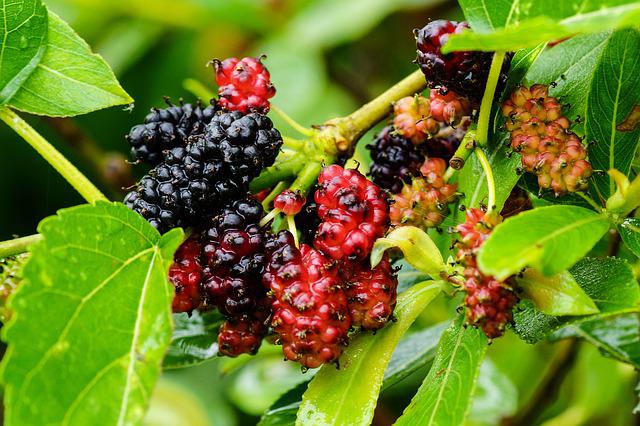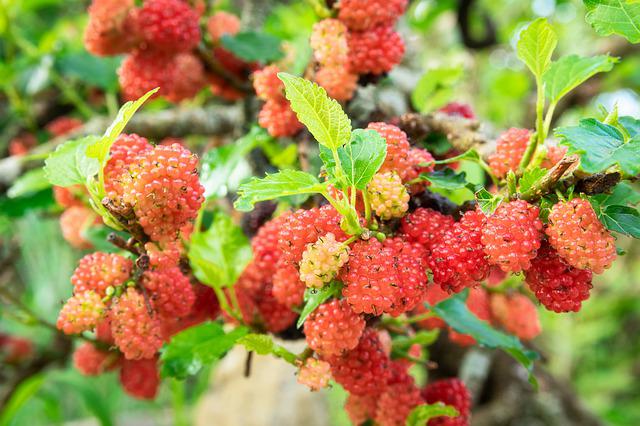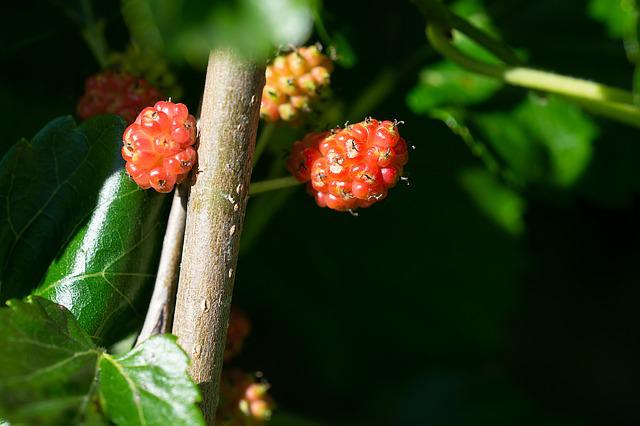How to Stop a Mulberry Tree from Bearing Fruit — Important Methods in Controlling the Spread of Messy Mulberry

Fruit from many trees that remains unharvested might fall to the ground, decay, stinks, and draw flies. It creates a huge mess. Fruit trees can be prevented from yielding fruit using a variety of techniques. Here are great ways to control the spread of messy mulberry.
Table of Contents
Important Methods in Controlling the Spread of Messy Mulberry
Pruning
One method of keeping trees from bearing fruit is pruning. This involves removing the branches that would produce or give rise to new buds, which could potentially become fruit-bearing limbs.
Pruning helps with this by removing gnarly-looking twigs and portions on healthy fruits and branches having weak stems, so they are less able to support growths. Since a tree’s health can be affected by pruning, you need to take proper precautions for this not to become an issue.
Pruning will reduce the number of fruits produced by a particular tree and allow one with smaller lots of fruit overall because it is easier for fruits left on their trees than those doused with vinegar or other harsh substances.
Steps in Pruning Your Mulberry:
1. Gather Your Equipment
According to the UC Master Gardener Program of Alameda County, fruit trees are often thinned out to make their fruits bigger. But if you are determined, you can also cut off all the tree parts and the buds that make the fruit to stop it from making, say, mulberries. First, get your garden shears and make sure they are sharp.
2. Get Your Tools Clean
Clean your garden shears to stop the spread of disease. University of Missouri Integrated Pest Management says that isopropyl or rubbing alcohol work fine most of the time.
3. Choose the Best Time
Prune before the trees bloom, which is the best time to prune the red mulberry tree in March or April.
4. Start Cutting Back
Work hard to eliminate the buds, which often look like tiny brown growths on the branches. Remember that the buds don’t start to grow for young trees until the second year.
5. Keep At It
Keep an eye out for new buds and flowers all year to ensure the mulberry tree doesn’t bear fruit.

Feeding with Nitrogen Rich Fertilizer
Nitrogen fertilizers help plant leaves grow. When trees put most of their energy into their leaves, they don’t have much leftover for reproduction. So they don’t make many buds, if any at all. Nitrogen source fertilizers also supply extra nutrients for root cells. It is a great idea to make both nitrate and potassium applications and mix different nitrogen sources simultaneously because of their differing effects on plants.
Removing Blossoms
Remove the flower buds of mulberry trees by hand. You will notice green leaves sprouting up as they bloom, but there won’t be any flowers until springtime. Pick by hand any buds that grow on your tree. This will make the tree unable to bear fruit. Like the kind used to clean the outside of homes, use a high-pressure sprayer to knock the buds off the tree. This is a faster way to do it.
Chemical Application
Apply a growth-regulating hormone to your tree to restrict fruit production. After the tree has flowered, mix this sort of hormone with water and sprinkle it over the tree with a pesticide spray sprayer.
Floral Fruit Eliminator-Floral has ethephon, which stops plants from making fruit and breaks down into ethylene, a natural plant hormone. It has to be used when the plant is in full bloom at the right temperature (60-95 F/16-32 C), and it will make the fruit fall off before it sets.
All conditions must be just right, like no diseases or bugs, enough watering, good drainage, and healthy soil. Any of these problems put the tree under stress, making it make ethylene on its own. Too much ethylene will hurt the tree by making the leaves fall off, hurting the stem, and burning the leaves. Because of this, even experts have trouble figuring out when the best time to use it is.
Snipper- it’s a hormonal solution that stops flowers from growing and can be used as a root or tree trunk cure-all to kill mulberry fruit trees. This is an acid solution that can be injected in tiny amounts at a time, and again, there is the best time to use it. All hormone sprays should be used when the plant is flowering but before setting fruit.
This timing is very important, and any change will waste time and money. There may be other chemicals that can be used to clean mulberries. Talk to an arborist or someone like that if you want information from a professional. Keep in mind that professional application is likely to cost money. If nothing else works, you might want to think about cutting down the tree and replacing it with one that doesn’t look so bad.
Steps in Spraying
What You’ll Need:
- Garden shears
- Isopropyl alcohol or other disinfectants
- Fruit inhibitor chemicals
- Ethephon or naphthalene acetic acid
- Safety goggles
- Garden sprayer
- Water
Instructions:
1. Choose Your Spray
According to the Morton Arboretum, various pesticides can be sprayed on fruiting plants such as mulberry trees to prevent them from producing fruit. In most cases, these products contain ethephon or naphthalene acetic acid, and they are commonly available at garden centers. Additionally, acquire a pair of goggles for eye protection and, if necessary, a garden sprayer.
2. Choosing the Right Moment
The optimal time to administer these chemical sprays is when the trees are in bloom but before fruit formation. Before or after this window, spraying will not be effective.
3. Commence Spraying
Ensure that you follow the manufacturer’s directions precisely, and then begin coating the selected trees with the desired chemicals. If you dilute the spray with water, ensure that you use the proper concentration. Too little will have no effect, while too much can harm the plant. Avoid applying the compounds to stressed plants since this can exacerbate the condition.
4. Prepare for the Coming Year
Remember that regulating mulberry fruit output is a long-term objective and that the same method will likely be required the following year.
Chop Off
Suppose you’ve tried everything but still mulberry making a mess. No other left option is to chop it off. If you have a mulberry variety that typically makes lots of fruit, chop it off during the spring only to see what happens. Chop it off and see whether or not next year will be fruitful.
Plant Fruitless Mulberry
Planting a male mulberry tree or a fruitless mulberry cultivar is the easiest way to keep a mulberry from fruiting and avoid the mess mentioned above. Male flowers never make fruit, but female flowers often make fruit that looks like blackberry and is about an inch long and red or purple. Growing fruitless mulberry trees is simple because they require little maintenance. Once planted, it is resistant to prolonged drought and flooding. However, it will grow more quickly if irrigated during dry periods.

